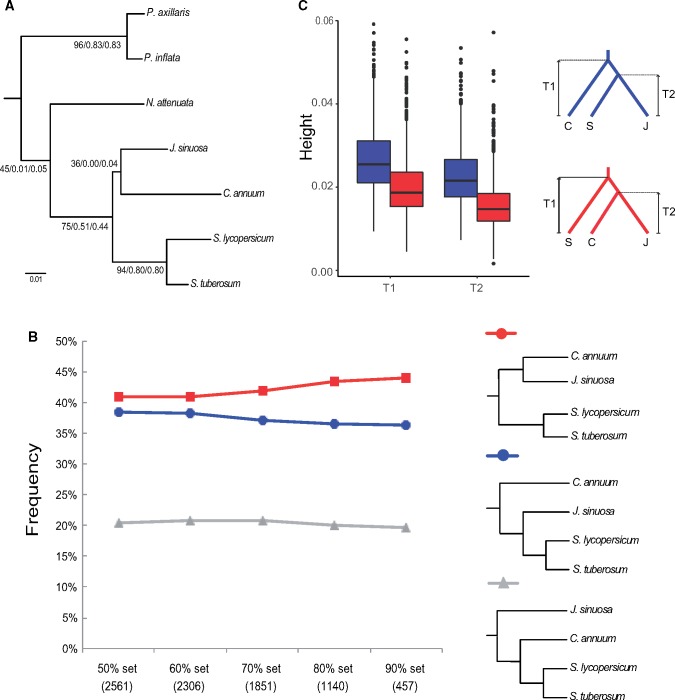Fig. 3.
—Phylogenetic relationships among the seven investigated Solanaceae species. (A) Concatenated RAxML tree rooted by A. thaliana. The values above each internal branch indicate the proportion of gene trees supported (%), internode certainty, and tree certainty all supporting each node in the majority-rule consensus tree, from BUCKy (Larget et al. 2010). (B) The percentage of gene trees supporting the three alternative phylogenetic positions of Jaltomata relative to S. lycopersicum, S. tuberosum, and C. annuum (assuming Solanum is monophyletic). Five different sets of gene trees were used, which were selected based on the average bootstrap cutoff across the gene tree. (C) Evaluation of the relative node depths (ages) in the two alternative bipartitions among Jaltomata (J), Solanum (S), and Capsicum (C). The higher average height (depth) of T1 and T2 indicate that Jaltomata and Solanum are sister clades, whereas shallower gene trees supporting Jaltomata and Capsicum as sister are likely to be influenced by introgression.

